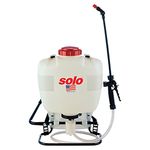
Q:
I’m having a builder put an attached deck on my house. To save money on the project, I’ll be digging the holes for the footings. On TV and in magazines, I’ve noticed what seems to be a transition toward using a bell-shaped attachment at the bottom of each pier when building a deck or other similar project. Are these wider footing bases necessary only in some situations and for some projects, or are they now considered the standard best practice? My builder says they aren’t necessary for my project, and I’m not inclined to dig extrawide, 4-ft. frost-depth holes in my compacted clay soil for these footing bases unless there is good reason.
Bill Dresser, South Windsor, CT

A:
Editorial adviser Mike Guertin replies: Footings need to be large enough to distribute the deck load they carry to the soil below, so their size is determined by the weight of the deck and the bearing capacity of the soil it’s built upon. The idea of a spread-base footing is that it allows you either to carry the same deck with fewer piers or to save on concrete by using a narrower column that rises to grade level. Spread-base footings also may be necessary if your soil is unstable.
Building-code standards for soil-bearing capacity are conservative, so there’s no great benefit to using footings larger than what you need. I agree with you that there’s no point in digging more than you have to, especially if you’re doing it by hand.
If the footings are larger than 20 in. dia., I usually dig with a backhoe or small excavator, so it’s not much extra work to make an oversize hole for a standard rigid-plastic spread-base form. From there, I can use a standard 10-in. or 12-in. cardboard footing tube to bring the pier up to grade. Footings smaller than 20 in., though, I usually dig by hand, so making holes large enough for a wider footing form can be a lot of extra work.
I typically don’t bother with spread-base forms if the required footing diameter is 12 in. or less. If the footings are between 12 in. dia. and 20 in. dia., I make my own spreadbase footings. The idea is to dig a 10-in.-dia. or 12-in.-dia. hole and to hollow the bottom 12 in. or so into a bell-shaped area of the needed size. Then I cut a standard builder’s tube about 8 in. shy of the hole depth, tape a garbage bag at the bottom, and drop the assembly into the hole. When the footing form is filled partway with concrete, the bag expands to fill the bottom of the hole without climbing up the outside of the form.
If you do use a spread-base form, it’s worth considering the diameter of the footing tube you bring to grade. In many cases, a 6-in. or 8 in. tube may technically be adequate, but the small savings in concrete may not offset the other potential headaches. If you are just slightly off with the location of a 6-in. footing tube, a 4×4 deck post may overhang the edge of the concrete pier. For the small amount of extra concrete, a 10-in.-dia. or 12-in.-dia. form gives you a bigger target area.
RELATED STORIES
Make Your Own Spread Footing Deck Forms
How to Install a Spread-Base Deck Footing
Fine Homebuilding Recommended Products
Fine Homebuilding receives a commission for items purchased through links on this site, including Amazon Associates and other affiliate advertising programs.

N95 Respirator

FastenMaster Screw Bolt Fastening System

4-Gallon Piston Backpack Sprayer

